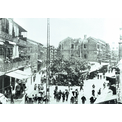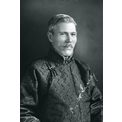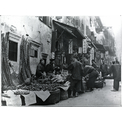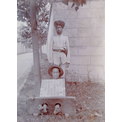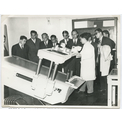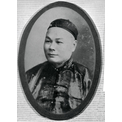-
History & Society
- Education in Pre-war Hong Kong
- History of Taikoo Sugar Refinery
- Hong Kong Products Exhibition
- Local Festivals Around the Year
- Post-war Industries
- Pre-war Industry
- The Hong Kong Jockey Club Archives
- Tin Hau Festival
- Memories We Share: Hong Kong in the 1960s and 1970s
- History in Miniature: The 150th Anniversary of Stamp Issuance in Hong Kong
- A Partnership with the People: KAAA and Post-war Agricultural Hong Kong
- The Oral Legacies (I) - Intangible Cultural Heritage of Hong Kong
- Hong Kong Currency
- Hong Kong, Benevolent City: Tung Wah and the Growth of Chinese Communities
- The Oral Legacies Series II: the Representative List of the Intangible Cultural Heritage of Hong Kong
- Braving the Storm: Hong Kong under Japanese Occupation
- A Century of Fashion: Hong Kong Cheongsam Story
Geography & EnvironmentArt & Culture- Calendar Posters of Kwan Wai-nung
- Festival of Hong Kong
- Ho Sau: Poetic Photography of Daily Life
- Hong Kong Cemetery
- Sketches by Kong Kai-ming
- The Culture of Bamboo Scaffolding
- The Legend of Silk and Wood: A Hong Kong Qin Story
- Journeys of Leung Ping Kwan
- From Soya Bean Milk To Pu'er Tea
- Applauding Hong Kong Pop Legend: Roman Tam
- 他 FASHION 傳奇 EDDIE LAU 她 IMAGE 百變 劉培基
- A Eulogy of Hong Kong Landscape in Painting: The Art of Huang Bore
- Imprint of the Heart: Artistic Journey of Huang Xinbo
- Porcelain and Painting
- A Voice for the Ages, a Master of his Art – A Tribute to Lam Kar Sing
- Memories of Renowned Lyricist: Richard Lam Chun Keung's Manuscripts
- Seal Carving in Lingnan
- Literary Giant - Jin Yong and Louis Cha
Communication & Media- Hong Kong Historical Postcards
- Shaw Brothers’ Movies
- Transcending Space and Time – Early Cinematic Experience of Hong Kong
- Remembrance of the Avant-Garde: Archival Camera Collection
- Down Memory Lane: Movie Theatres of the Olden Days
- 90 Years of Public Service Broadcasting in Hong Kong
- Multifarious Arrays of Weaponry in Hong Kong Cinema
-
History & SocietyGeography & EnvironmentArt & Culture
-
View Oral History RecordsFeatured StoriesAbout Hong Kong Voices
-
Hong Kong Memory
Tablet bearing inscription jian yi yong wei
Tablet bearing the inscription jian yi yong wei (assistance offered for a just cause)
10th year of the reign of Guangxu, Qing dynasty (1884)
Collection of Tung Wah Museum
In 1883, the levees of the Yellow River broke, resulting in serious flooding in Shandong, Zhili (present-day Hebei province), Jiangsu and Zhejiang provinces. To better coordinate disaster relief work, the Qing court established the Shun Zhi Shandong Shazhou Zhenjuan Gongsuo (Fund-raising Office for Flood-fighting Efforts in Shuntian, Zhili and Shandong). Since its founding, Tung Wah had extended the reach of its chartable work beyond the borders of Hong Kong. Every time China was struck by a severe calamity, Tung Wah has been ready to offer relief and help to those affected. When the Yellow River overflowed in 1883, Tung Wah not only raised funds for the victims, but also played the role of mediator and helped send donations from overseas Chinese organisations to China. Tung Wah was highly praised by the Qing court for its benevolence and readiness to help during difficult times.
This tablet was presented to Tung Wah Hospital by Li Hongzhang, Grand Secretary and Viceroy of Zhili, jointly with three other government officials: Minister of Rites, Bi Daoyuan; Governor of Shandong, Chen Shijie and Magistrate of Shuntian, Zhou Jiamei, who was acting as Co-minister of the Census in the 10th year of the reign of Guangxu (1884) to commend the hospital for "offering assistance for a just cause."
Date 1884 Object Tablet Material Type Image Collection Hong Kong, Benevolent City: Tung Wah and the Growth of Chinese Communities Source Tung Wah Museum Repository Tung Wah Museum Note to Copyright Permission for use in Hong Kong Memory is given by Tung Wah Group of Hospitals Accession No. lcs-twgh-0211 Copyright © 2012 Hong Kong Memory. All rights reserved.







